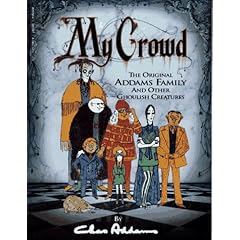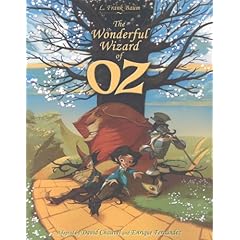
I featured Dan Dare on my old Weekly Comics Hype a couple of times in the past (see here), and so I hope even the non-comic readers among you should be familiar with it. If not, this is a wonderful science-fiction adventure from the pen of Frank Hampson, originally published in the pages of the Eagle, a much-loved anthology comic, in the 1950s and 1960s. Titan has been collecting the series in very nice hardback collections for a little while now, and they're packed with additional material, including interviews and bonus strips from the pages of the old Annuals.
"Voyage to Venus" is a very long story - originally told over 18 months (April 1950 to September 1951) - but the thrill with Dan Dare is the complex plots, which pile on additional complications in almost every episode. Dare himself, square-jawed and British to the core, is a fantastic hero. He meets his immortal enemy the Mekon for the first time in this story and there's a brilliant scene where he realizes a way out of his cunning trap and asks the simple question of his captor, "Can you swim?" It's years ahead of its time.
The downside is that I'm not completely satisfied with all the reproduction. I sympathize that Titan had a lot of reconstruction and repair to do, but there are places where new lettering would have been appreciated. Despite its length, a single, larger-sized hardback would have been nice, too. I certainly recommend everybody give Dan Dare a try, but perhaps new readers might be better off sampling one of the volumes like "The Red Moon Mystery" which tells a complete story between its covers.

I gave DC Comics a bit of a thrashing earlier in the week, so, fair's fair, I should point out that for a couple of years now, they've been publishing the most consistently entertaining comic in America. It's The Spirit, a revamp of the classic put-upon detective hero of the 1940s. Created by Will Eisner, the original series ran in weekly installments for about twelve years and has been reprinted by various companies ever since. DC's had the rights to most of Eisner's many stories and creations for some time now, and almost all of the Spirit's original run is available in a nice, albeit expensive, series of thick hardbacks.
In late 2006, they began publishing a new series of Spirit comics written and illustrated by Darwyn Cooke, assisted by J. Bone and David Stewart. The team handled twelve issues, each a self-contained, incredibly clever little hard-boiled mystery with femmes fatale, ugly villains and lots of broken bones. The collection here reprints the first six issues of the series along with a team-up with Batman which preceded the run by a month, and which conspires to be one of the best Batman stories I've ever read, an incredibly entertaining, funny and inventive story. Mercifully, this is the only intrusion by the DC Universe into the world of the Spirit. Since taking on this title, I've lived in fear that Geoff Johns is going to have him join the Justice Society or something, but that hasn't happened yet.
Cooke's run ended earlier this year, but the series continues, scripted by Mark Evanier and Sergio Aragonés, with art by Paul Smith. It's still the best darn book any American company is publishing. Right now, this hardback collection is pretty hard to find, and not available from online retailers. I know that a paperback edition is planned for later in the year, but better bookshops may still have this one on the shelves. It comes with a very high recommendation from me, so check it out.
(Originally posted May 30, 2008 at hipsterdad's LJ.)













